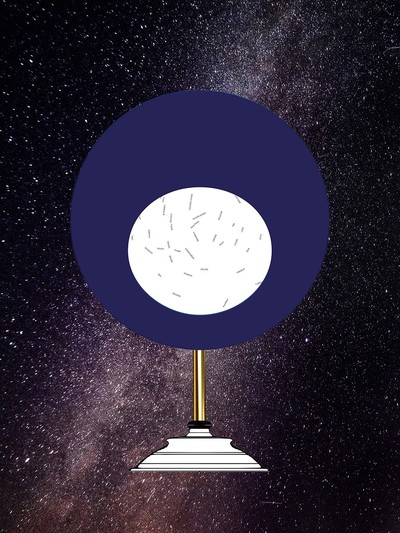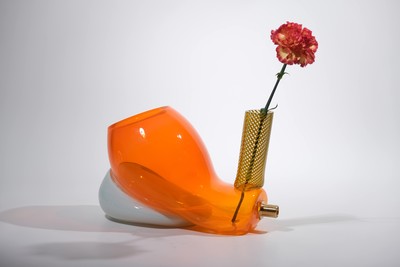Cécile Canel & Jacques Averna
Winners of Grand Prix 2021
A night in July, the moon shines on the hill of Castéou. The stridulation of crickets emanates from juniper bushes. A blow of air ruffles the branches of green oak trees, down there the harbour turned on its lights. The silent great waltz of the night sky, moving around the North Star, has begun. At 11pm already, Capricorn and Aquila raise behind Levant Island. Around 2am, these three are chased by the Pisces. At 2.30am Cetus looms, pushing them southward. At 5am, it is its turn to be replaced, by Taurus and Aries. At dawn, Lepus the Hare and the Great Dog come after them then fade, while the sun rises. The celestial choreography is over. But the bestiary is still there, the stars are still running, invisible until next twilight. We are in Hyères, on the 43rd parallel north. At the same time, according to the time zone, the sky is the same at any point of this latitude. Whether we are in the middle of the Gobi Desert, in Toronto or in Vladivostok, in Twin Falls, Idahoor in Bilbao : the same bestiary, the same window above us. The celestial planisphere created by Cécile Canel in collaboration with the Manufacture de Sèvres allows to see the map of the starry sky in our latitudes, at night. Just like an endless calendar, it is always valid. It consists of a lithophane planisphere disc (i.e. engraved in very fine and translucent porcelain), of a graduated dial and a candlestick. It must be adjusted by the amateur astronomer who uses it: the disc must be manually aligned with the date according to the time of night. The candle placed at the back of the object allows to backlight the constellations map: this soft lighting avoids disturbing our fields of view during a night observation. A turned porcelain base, decorated with a cloudy azure supports the device like a reminder of the day - night duality. Finally, just like the mobile sky maps, the celestial Planisphere operates with specific cardinal points. East and West are inverted : As it is about a map of the sky seen from Earth and not a map of the Earth seen from the sky, it is mirrored, as if we held it above our head.
To Jacques Averna, the vase is above all a water container. A fundamental function that has always allowed us to grasp an uncatchable substance. Rather than considering it as pure ornament, he chooses to approach the vase according to the relationship it has with other water containers of housing: sinks, hot water tanks and other flushes. All of them are arranged within a domestic circuit designed to contain, organise and conduct this impalpable fluid. Systematically placed up high,
these containers let water flow naturally. Inspired by hydraulic techniques used since ancient times such as the Roman impluvium, thermae and basins, Jacques Averna designs a set of containers pouring into each other. The vases then get curiously pierced. Pierced, they go hand in hand and take on their full meaning in their reciprocal operation, like so many flower fountains. Through echoes and resonances, these search methods lie at the very heart of the formal vocabulary. Each vase is proceeded by assembling features intrinsically linked to glassmaking: play of transparency and opacity, rastered patterns, volumes either constrained by a mould or freed by the blowing. Through hot bonding which allows to weld two pieces, the designer plays with the arrangement of forms in a network where they are opposed, connected, or repel each other. He invites us, both as viewers and readers, to move along objects, to better decipher their intervals. All in all, to comprehend glass art as a genuine assembly practice. With Lavax, Jacques Averna revisits the 1960s’ iconic “lava lamp”. Confronting glass tradition and mass decorative object, the designer renews this archetype with tapered ogival shapes and chrome - plated plastics. To this end, he designs a lamp made of borosilicate glass, which withstands quite high temperatures, and of a brass base. Lavax reveals an ennobling work that allows – to all appearances – through technologies used in laboratory glassmaking, to pull the lava lamp out of the kitsch roots it carries. A quite relative uprooting: on the head of a clamping screw, one detail catches the eye. Engraved in metal, little smiley smiles at us, a mischievous wink to the fun of an object both old - fashioned and daring.


